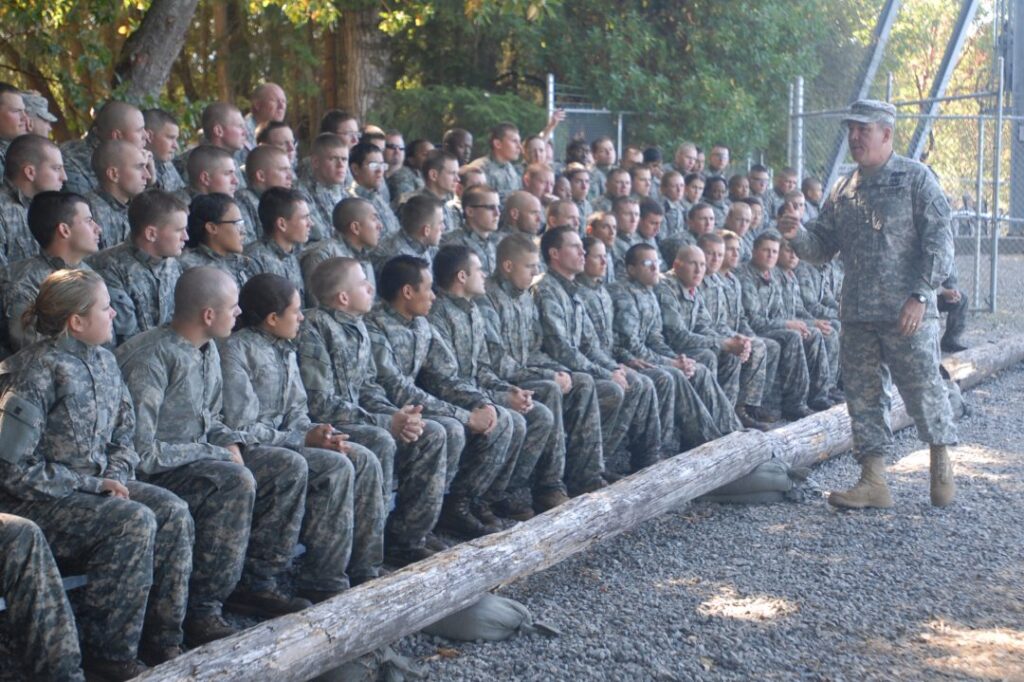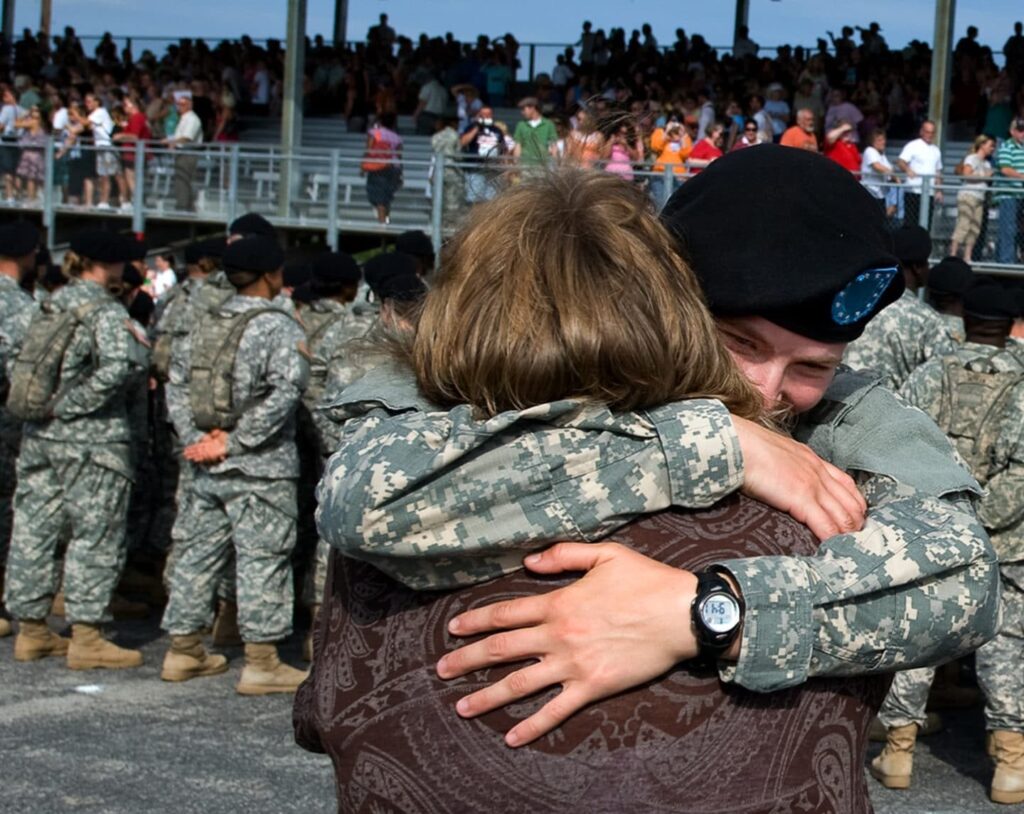When people think of joining the Air Force, they often think of how they will make it through basic training and their military career. However before you even get a chance to step on the bus, you will need to meet the minimum requirements to join the Air Force.
Requirements to join the Air Force
So you want to join the Air Force but don’t know what you need to know or have to join? Well, it’s pretty simple. The hard limits are:
- Be between 17 and 39 years of age (With parental permission if 17)
- Be a US citizen or legal, permanent resident
- Have a high school diploma, GED with at least 15 college credits, or GED
If you don’t meet these requirements, you won’t even get to a stage of filling in paperwork, its a straight no. High school diploma is probably the easiest of the 3 to fix, if you are thinking of enlisting, be aware of these minimum requirements.
The next part of the requirements to join the Air Force is paperwork. You will need to do a lot of paperwork with your recruiter. A background check and all your personal information will be needed. You will talk at length about what you want out of your military career including what you hope to do in the Air Force. For the paperwork, you will need the following personal documents:
- Driver’s License or State ID
- Social Security card
- Green card (if applicable)
- Passport (if you have one)
- Birth certificate
- Marriage license or divorce papers (if applicable)
- Legal records (if needed)
- Your school diplomas and/or degrees (the actual ones, NOT copies)
- College transcripts
- Records, locations, and contact info of all places you have worked at over the past 5-10 years
- Addresses where you have lived the past 7-10 years
- Travel dates and locations of any time you have traveled outside the U.S.A. over the past approximately 10 years
- Contact information for people you have known up to 10 years ago
- Copies of medical records for any significant conditions you may have had recently
Some of these are for proof of identity while others are for your background investigation. Unfortunately, not everyone is Steve Rogers (Captain America), so the Air Force has to put in a little bit of effort to make sure that you aren’t a member of Hydra.
Air Force Weight Requirements
But what about the Armed Force Vocational Aptitude Battery (ASVAB) test? Don’t jump the gun! Before you even take the ASVAB, you’ll have to talk to a recruiter and make sure you meet these requirements with a few additional limitations.
Obviously Basic Military Training (BMT) will provide you with a lot of physical and mental training, but the Air Force has to ensure you have a good baseline before shipping you off. The most gung-ho recruit won’t even be able to step foot onto the bus until they meet the weight requirements for males and for females:
| Height (inches) | Max Weight (lbs) |
|---|---|
| 58 | 131 |
| 59 | 136 |
| 60 | 141 |
| 61 | 145 |
| 62 | 150 |
| 63 | 155 |
| 64 | 160 |
| 65 | 165 |
| 66 | 170 |
| 67 | 175 |
| 68 | 180 |
| 69 | 186 |
| 70 | 191 |
| 71 | 197 |
| 72 | 202 |
| 73 | 208 |
| 74 | 214 |
| 75 | 220 |
| 76 | 225 |
| 77 | 231 |
| 78 | 237 |
| 79 | 244 |
| 80 | 250 |
I had to learn this the hard way by losing 50lbs! So if you are thinking of dropping yourself out now, don’t give up yet! Just be sure once you make weight you keep it that way for the duration of being in the Delayed Entry Program (DEP). This is basically a holding status that you will be on until you officially depart for training.
Air Force ASVAB and scoring
Once you have checked all the boxes, it is time to take a practice ASVAB at your recruiting station. This will give the recruiter a bit of insight into what jobs might be available to you and how you can think about your enlistment.
Minimum Air Force ASVAB Requirements
It may also be a quick disqualifier… But don’t worry! For high school graduates, the minimum score requirement is 36, and 65 for GED holders. Once you join, there are many opportunities to cross train and eventually move into a career field that you’re more interested in.
From here, they will send you to the Military Entrance Processing Station (MEPS) to take the actual ASVAB. You will also be subject to several physical and mental screenings which includes range of motion, hearing, and vision examinations.
The ASVAB will consist of ten sections:
- General Science (GS)
- Arithmetic Reasoning (AR)
- Word Knowledge (WK)
- Paragraph Comprehension (PC)
- Mathematics Knowledge (MK)
- Electronics Information (EI)
- Automotive and Shop Information (AS)
- Mechanical Comprehension (MC)
- Assembling Objects (AO)
- Verbal Expression (VE)
How the ASVAB is scored for Air Force
For the Air Force, these sections will be attributable to four main aptitude areas:
| M | Mechanical | MC + GS (2 × AS) |
| A | Administrative | NO + CS + VE |
| G | General | VE + AR |
| E | Electrical | AR + MK + EI + GS |
The jobs available to you will be based on these composite scores, what aptitude area you’ve scored well in, and any physical limitations such as color blindness.
These jobs are referred to as Air Force Specialty Codes (AFSC). When you go back to your recruiting station and talk to your recruiter, you will talk to him/her about the AFSCs you have available and discuss what the best fit for you would be. You will then rank your AFSCs and submit this list for consideration. Just be aware that you may not get your number one choice – the needs of the Air Force will often override your personal needs.
Through this method, you can either “lock in” an AFSC and be expected to have it whenever you graduate BMT or enter BMT as “Open General” and obtain your AFSC during training midway through. Open General candidates will obtain a shorter list of AFSCs available during training as the jobs available will only be the ones with immediate openings, but they will still have the opportunities available to them based on their ASVAB scores.
For other specific AFSCs such as a Cryptologic Linguist, you will have to take an additional test to see if you are qualified for that as well. For example, you would have to score a 72 on your ASVAB to take the Defense Language Aptitude Battery (DLAB) for linguists. If you pass the DLAB as well, you are qualified to train as a Cryptologic Linguist. If you manage to get this AFSC, you will learn what language you will be trained in during BMT.
What happens at Air Force Delayed Entry Program?
As mentioned before, you will be in DEP until your date of shipping is confirmed. This is a program that allows you to meet with the recruiter and other potential applicants with the intent of helping you acclimate to the military before BMT. Depending on the DEP, they will conduct such activities as marching, mock PT tests, drill commands, and morale events.
Once your shipping date is confirmed, you will return to MEPS to go through physical and mental examinations again. During this screening, they will take an assessment of your current health along with some questioning about any previous ailments or injuries. This will again contain tests on your range of motion, hearing, and vision which they will compare to your old results.
A little golden nugget – bring a book or something non-electronic to do; you will be waiting a long time without your phone during processing. Just don’t bring something that will get you yelled at; you’re a military recruit. If you can’t figure it out, just watch the movies on the television if they’re kind enough to play them for you.
Are you allowed to have tattoos in the Air Force?
If you haven’t discussed this with your recruiter before, this is also where you would declare your tattoos. As of 1 FEB 2018 instead of the 25% visible skin rule, the Air Force now allows tattoos anywhere as long as it does not include the neck, face, head, tongue, lips, scalp or hands. The only exception is a single band on the hand. The tattoos also cannot contain anything relating to gangs, extremist or supremacist organizations or advocate for sexual, racial, ethnic, or religious discrimination.
If you’ve completed all of this without any hiccups, you will then join your fellow applicants in taking the oath of enlistment. From that moment forth, you will embark on your military career at BMT and the start of your Air Force journey.
Preparing for Air Force Basic Training
If you’re ready to start preparing for Air Force basic training, view our blog on everything you will need to know before arriving at Lackland Air Force Base.
Is your ship date right around the corner? View our packing list for what you should bring with you to Air Force basic training.





